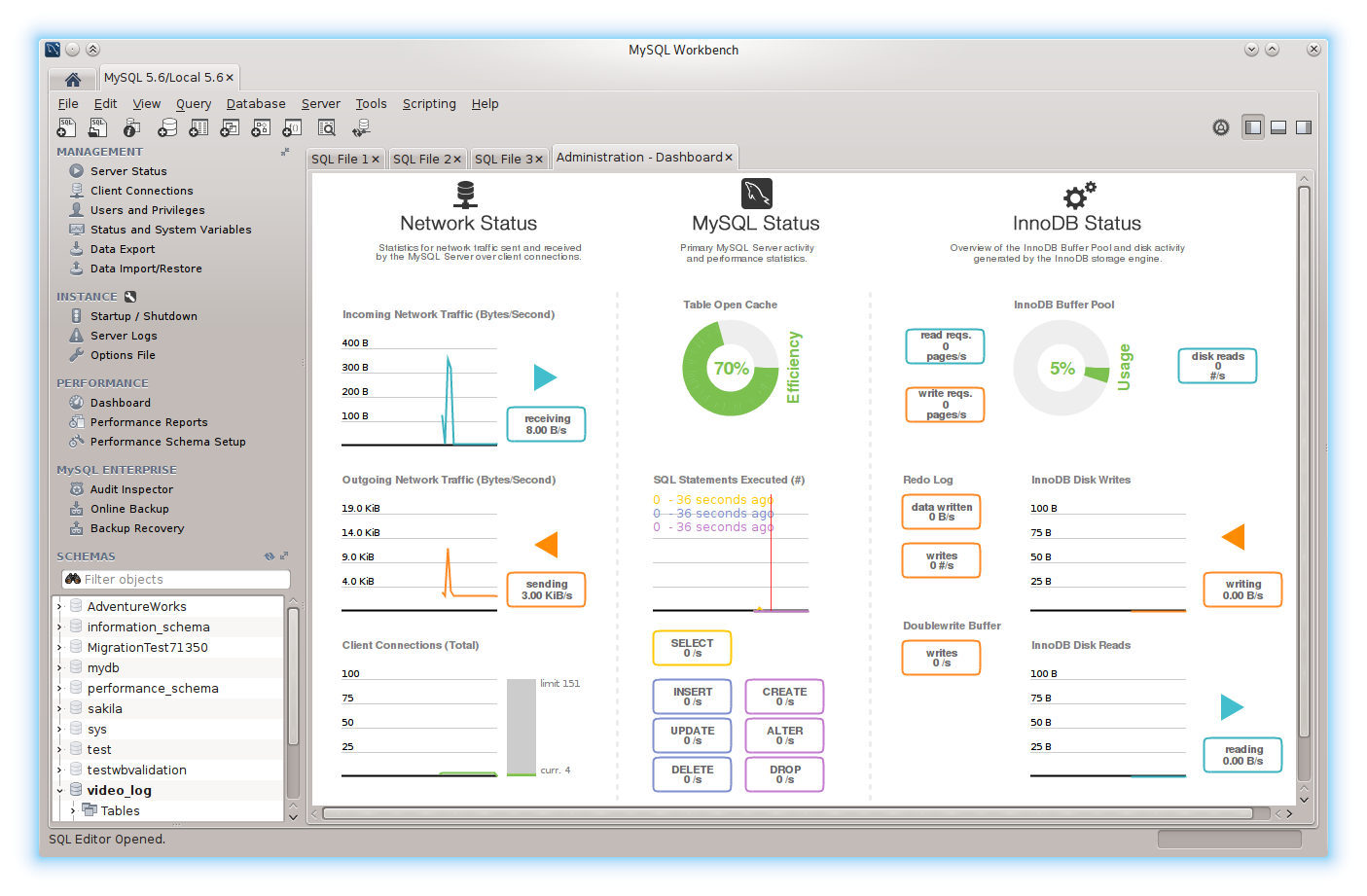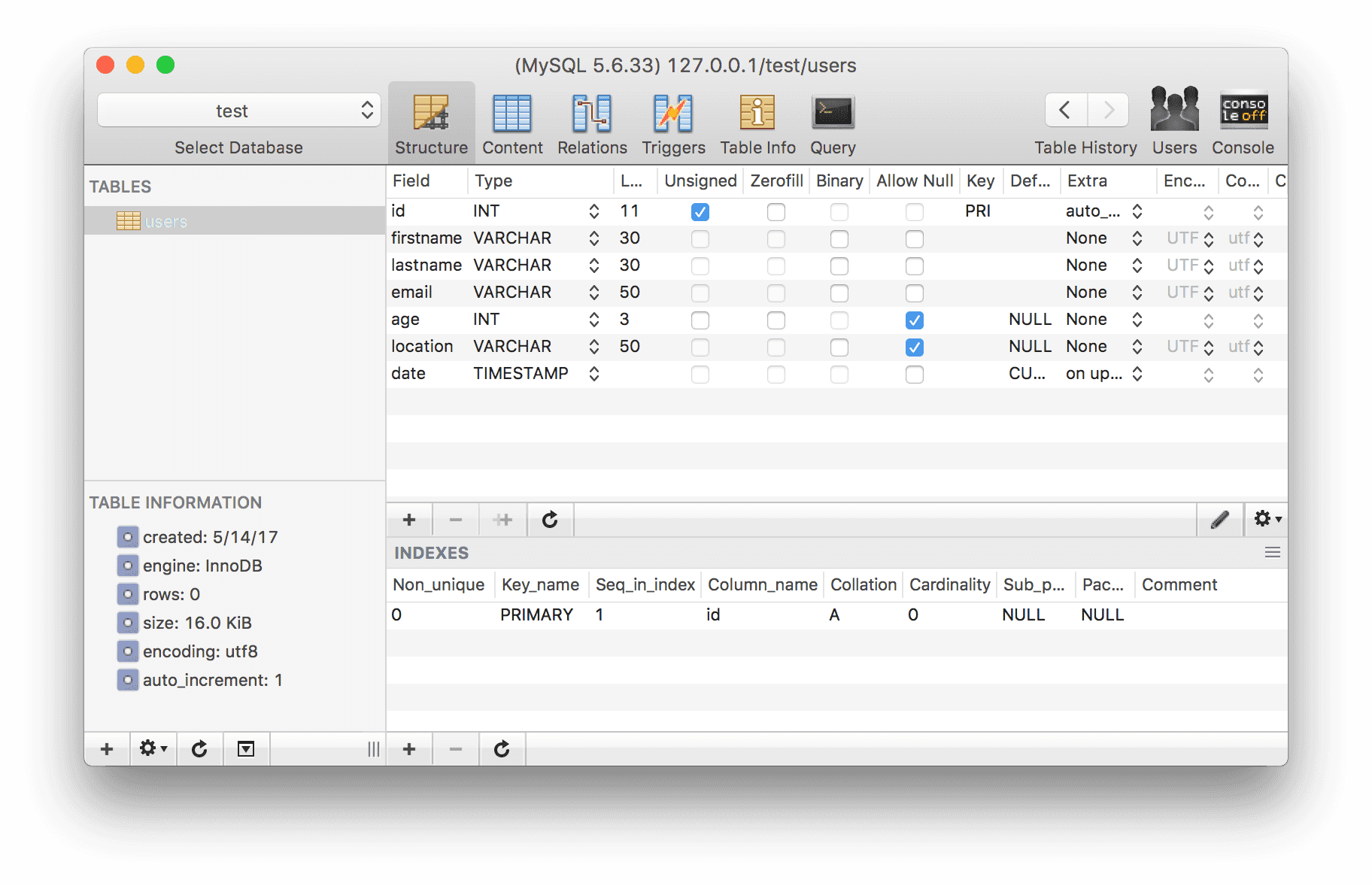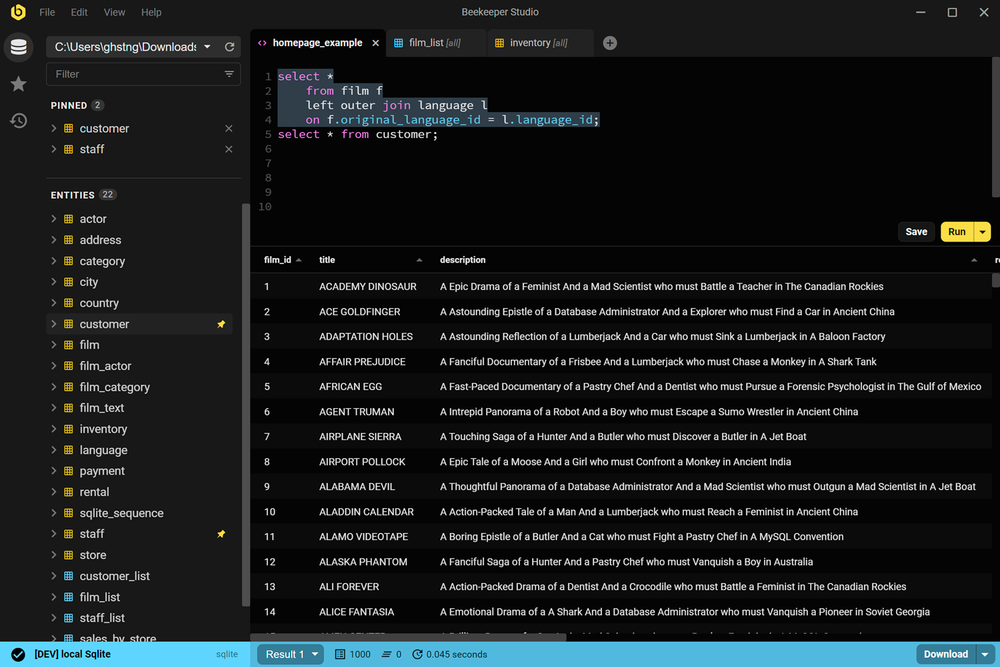
With it, you can design, develop, and manage MYSQL databases using a wide variety of tools that allow you to work both locally and remotely. MySQL Workbench is arguably the most popular database administration application across OS platforms.
#Linux mysql web gui install#
I am not looking to progress with this iteration on the WebUI any further, i am looking at starting a dynamic WebUI complete with server install and configuration functionality. Here are the 10 best GUI tools for Linux System Administrators. I hope that i have covered the majory of things that need to be adjusted, if you need any more information let me know. If you should ever need to manually change a users password without access the the WebUI admin functions, you can generate a password has by attempting to login with the user "hashme" and with the passsword you wish to have hashed, this will output the relevant hash that can be placed into the MySQL database to alter a users password. The majority of admin functionality can be done from withing the WebUI hwoever permission setting must be done directly through the MySQL database, simply change the 0 to 1 or vice versa for the respective serer id in the servers_username table. Without sudo you will be prompted for the username when script.sh calls the su command, which wont be available to being a non interactive session.

I highly recommend creating a specific nopasswd entry in your /etc/sudoers file so that you can execute script.sh specifically. If you operate users as a seperate user to your web server, you will need to adjust script.sh to match teh user and directory structure. Webmin removes the need to manually edit Unix configuration files like /etc/passwd, and lets you manage a system from the console or remotely. Using any modern web browser, you can setup user accounts, Apache, DNS, file sharing and much more. The WebUI itself is handled purely from within its document root, however external function calls are made using absolute paths. Webmin is a web-based interface for system administration for Unix.
#Linux mysql web gui code#
The code is written in basic php using a mysql database for storage, and a little bit of bash magic to pull it all together.


I suggest you make use of this functionality in order to allow yout users to keep FTP and web ui in sync. SnitchDNS is a database driven DNS Server with a Web UI, written in Python and Twisted, that makes DNS administration easier with all configuration changed applied instantly without restarting any system services. This system make use of the SQL structure that ProFTPD uses for MySQL authentication. Im not good at writing readme's and this code was never to see the light of day. Web UI for LinuxGSM - initially purely internal


 0 kommentar(er)
0 kommentar(er)
